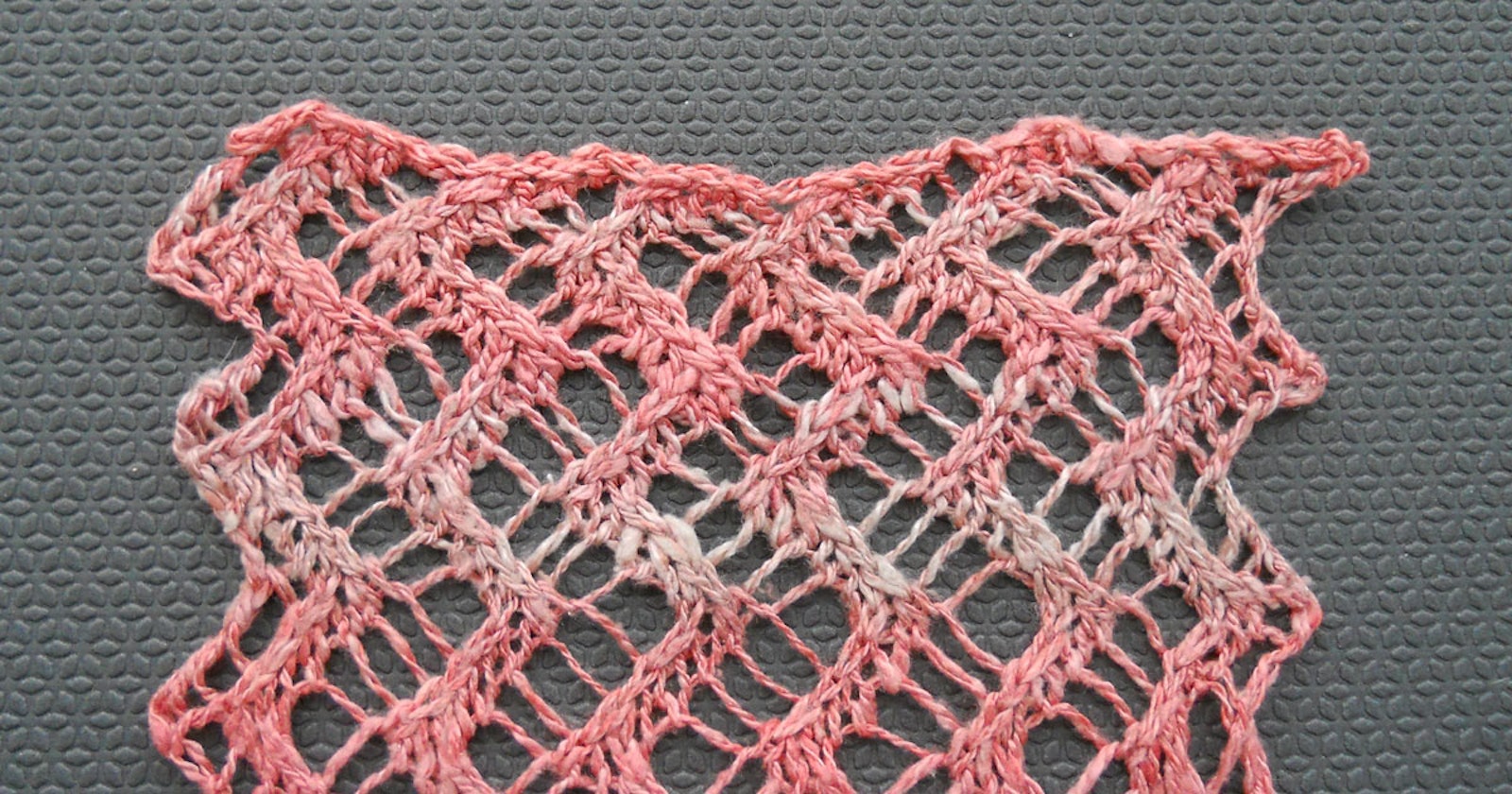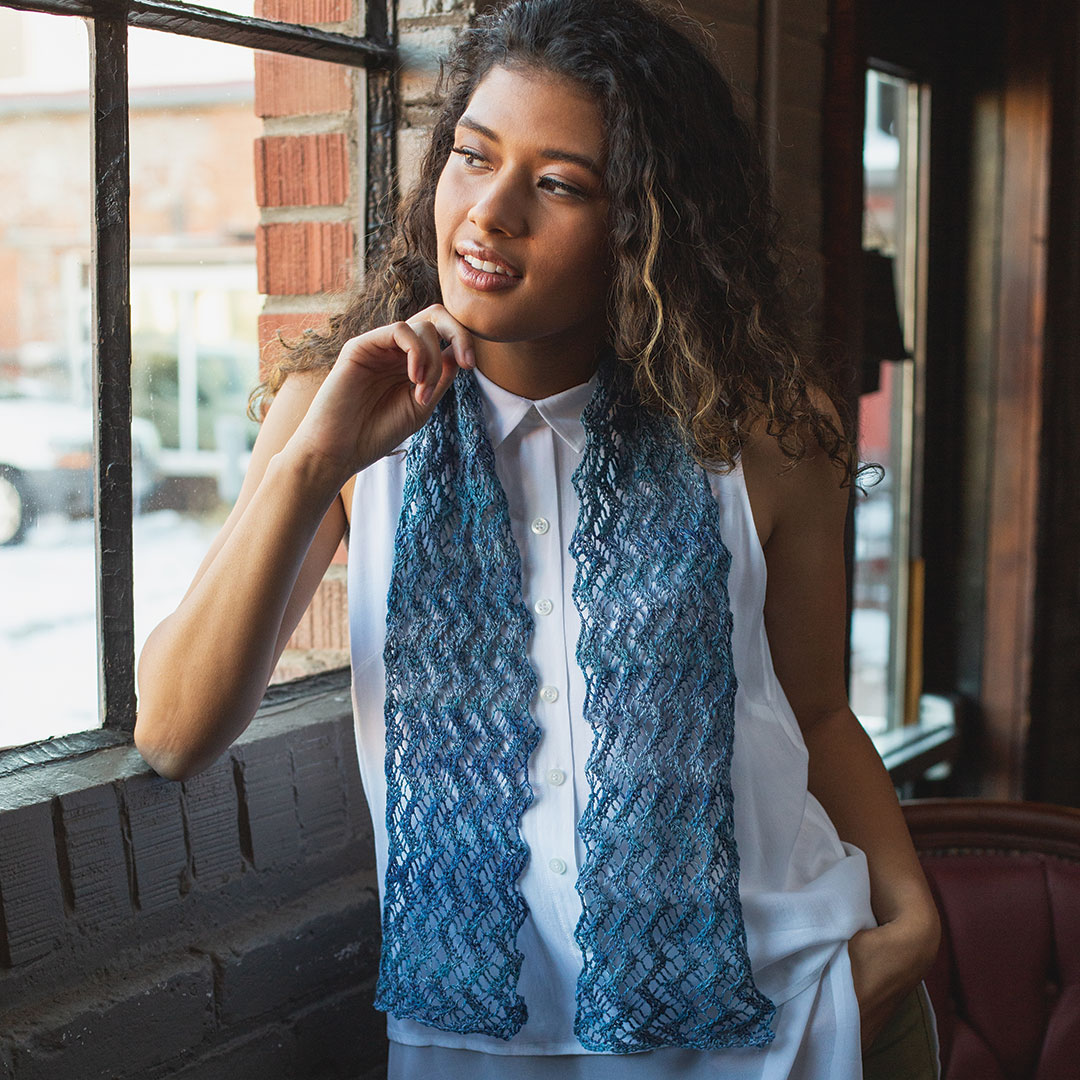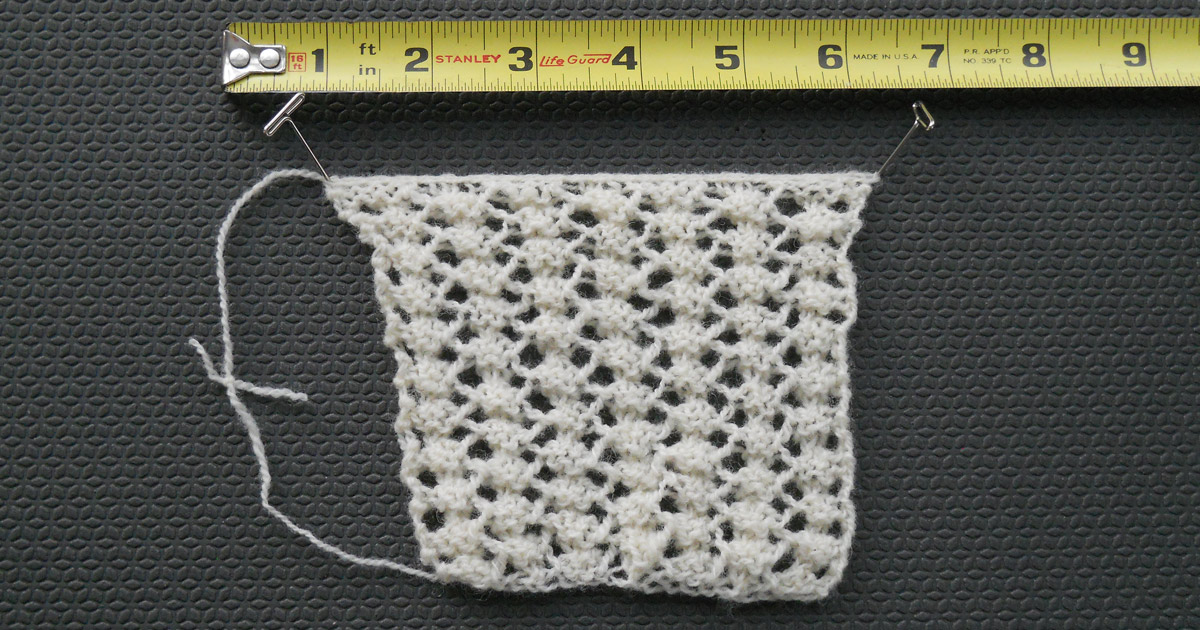You can find the Wild Water Scarf pattern and instructions for spinning silk hankies in the Spring 2019 issue of Spin Off! —Kate
Amy Tyler explores spinning and knitting with silk hankies to create her Wild Water Silk Scarf. Photo by Harper Point Photography
Sewn Bind-Off: Give it a try
By Amy Tyler
A successful knitter can go a lifetime using just the basic knit or basic purl bind-off. I certainly have used these bind-offs exclusively for many years. After all, they provide a nice, all-purpose finish that’s easy to do and remember.
Unblocked swatch of handspun Corriedale wool knitted in a simple lace pattern using a basic knitted bind-off, stretched as far as possible. Photos by Amy Tyler
However, I have found situations in which other bind-offs just work better. One such situation is when working with low-elasticity fibers such as cotton, silk, or linen. Another is when I need to bind off a piece of lace knitting, something with many yarnovers that needs to be strongly blocked. Both of these were true for my Wild Water Silk Scarf, so tried a sewn bind-off.
Unblocked swatch of handspun Corriedale wool knitted in a simple lace pattern using a sewn bind-off, stretched as far as possible.
The sewn bind-off has two important advantages: it is very flexible and stretchy, and it is visually unobtrusive. However, there are a few instances in which the sewn bind-off may not be the best choice:
1. Abrasion
Because of the sewn nature of the bind-off, the yarn is abraded with every stitch, so it does not work well with highly textured yarns that will snag when sewn or low-twist singles (finished without fulling) that could fall apart during sewing.
2. Loads of stitches
The sewn bind-off may not be the best choice if you have a very large number of stitches to bind off, unless you are willing to attach additional yarn as you work the bind-off edge.
Sewn Bind-Off: Give it a try!
Cut the yarn three times the width of the knitting to be bound off and thread on a tapestry needle. Working from right to left, *insert tapestry needle purlwise (from right to left) through first two stitches and pull the yarn through, then bring needle knitwise (from left to right) through the first stitch, pull the yarn through, and slip this stitch off the knitting needle. Repeat from *.
I have also used a number of variations on the sewn bind-off. All the versions that I have tried are reasonably similar in look, although you may find a preference for one over the others. They are all stretchy and good for binding off lace or any other edge that you want to be flexible. Each variation involves the first and second stitches on the left knitting needle; with the first threading movement involving the second stitch and the second threading movement involving the first stitch. However, the details can vary.
It’s nice to have choices!




